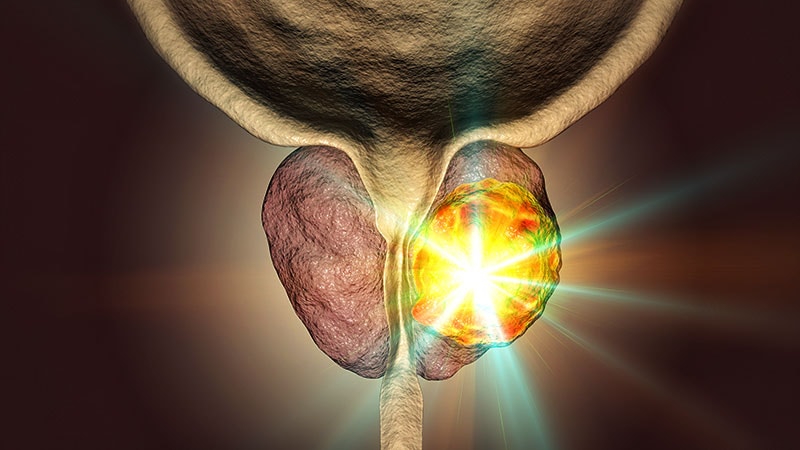Is Short-Term ADT Good Enough in High-Risk Prostate Cancer?
TOPLINE:
Overall, 30 months of adjuvant androgen deprivation therapy (ADT) did not improve biochemical control and other survival endpoints compared with just 6 months of ADT in men with high-risk localized prostate who received brachytherapy and external beam radiation therapy (ERBT).
METHODOLOGY:
-
Men with high-risk prostate cancer who receive ADT for 18 months or longer have demonstrated better outcomes compared with patients who receive ADT for 6 months. However, combining shorter-course ADT with brachytherapy and EBRT can also provide strong results.
-
The current trial compared long-term ADT with short-term ADT among patients also receiving brachytherapy and EBRT.
-
The trial enrolled 332 men with high-risk localized prostate cancer at 37 centers in Japan who were treated with 6 months of ADT plus brachytherapy followed by EBRT. After stratification, 165 were randomly allocated to no further treatment (short-term arm) and 167 to 24 additional months of adjuvant ADT (long-term arm).
-
The primary endpoint was the cumulative incidence of biochemical progression; secondary endpoints included clinical progression, metastasis, salvage treatment, disease-specific mortality, overall survival, and grade 3+ adverse events. Median follow-up was 9.2 years.
TAKEAWAY:
-
At 7 years, longer-term ADT did not significantly reduce the cumulative incidence of biochemical progression (8.0% vs 9.0%; P = .65).
-
The researchers observed no significant differences in secondary outcomes of clinical progression, metastases, or survival.
-
Toxicity did not differ statistically between arms. The rate of endocrine-related grade 3+ adverse events was 0.6% with short-term ADT and 1.8% with long-term (P = .62), and the rate of radiation-related grade 3+ events was 1.2% with short-term ADT vs 0.6% with long-term (P = .62).
IN PRACTICE:
“The present investigation, designed as a superiority trial, failed to demonstrate that 30-month ADT yielded better biochemical control than 6-month ADT when combined with brachytherapy and EBRT,” the authors conclude. “These data imply that improved local control with a brachytherapy boost may obviate the need for long-term ADT.”
SOURCE:
The study, with first author Atsunori Yorozu, MD, PhD, National Hospital Organization Tokyo Medical Center, was published online on October 4, 2023 in the International Journal of Radiation Oncology Biology Physics.
LIMITATIONS:
The trial could not prove that 6 months of ADT was noninferior to 30 months of ADT in this treatment setting. As a primary endpoint, biochemical progression-free survival is not a surrogate for overall survival. The sample size was small and comprised an Asian population.
DISCLOSURES:
The study was funded by AstraZeneca and Nihon Medi-Physics. The authors reported no relevant conflicts of interest.
For more from Medscape Oncology, join us on X (formerly known as Twitter) and Facebook
Source: Read Full Article
